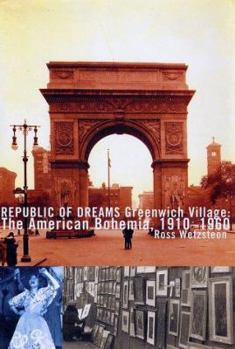Republic of Dreams : Greenwich Village: The American Bohemia, 1910-1960
Select Format
Select Condition 
Book Overview
A rich and spirited history of Greenwich Village's Golden Age and of the rebels, artists and eccentrics who made the Village the centre of America's bohemian and cultural life. It has been called 'the most significant square mile in American cultural history' and 'the place where everything happens first.' And while it may be true that 'Greenwich Village isn't what it used to be' (a phrase that was uttered as early as 1916), this legendary New York neighborhood has made a lasting impact on American life. Now, based on ten years of research, REPUBLIC OF DREAMS tells the fascinating story of 'the Village' and its extraordinary residents. From the first decade of the twentieth century through the sixties, rebellious men and women from all over the country flocked to the Village to fulfil their artistic, political and personal dreams. Emma Goldman, Edna St. Vincent Millay, Eugene O'Neill, Jackson Pollock, Margaret Sanger, Delmore Schwartz, Thomas Wolfe and more came to a bohemian enclave that would become an integral part of their careers. Ross Wetzsteon's lively history examines the tempestuous Village lives of these American icons and places their personal stories within greater soci
Format:Hardcover
Language:English
ISBN:0684869950
ISBN13:9780684869957
Release Date:June 2002
Publisher:Simon & Schuster
Length:640 Pages
Weight:2.23 lbs.
Dimensions:9.5" x 1.8" x 6.2"
Related Subjects
20th Century Biographical Biographies Biographies & History Biography & History Education & Reference Historical Study & Educational Resources History Literary Literary Criticism & Collections Literature Literature & Fiction Modern (16th-21st Centuries) Social History Social Science Social Sciences State & Local World











